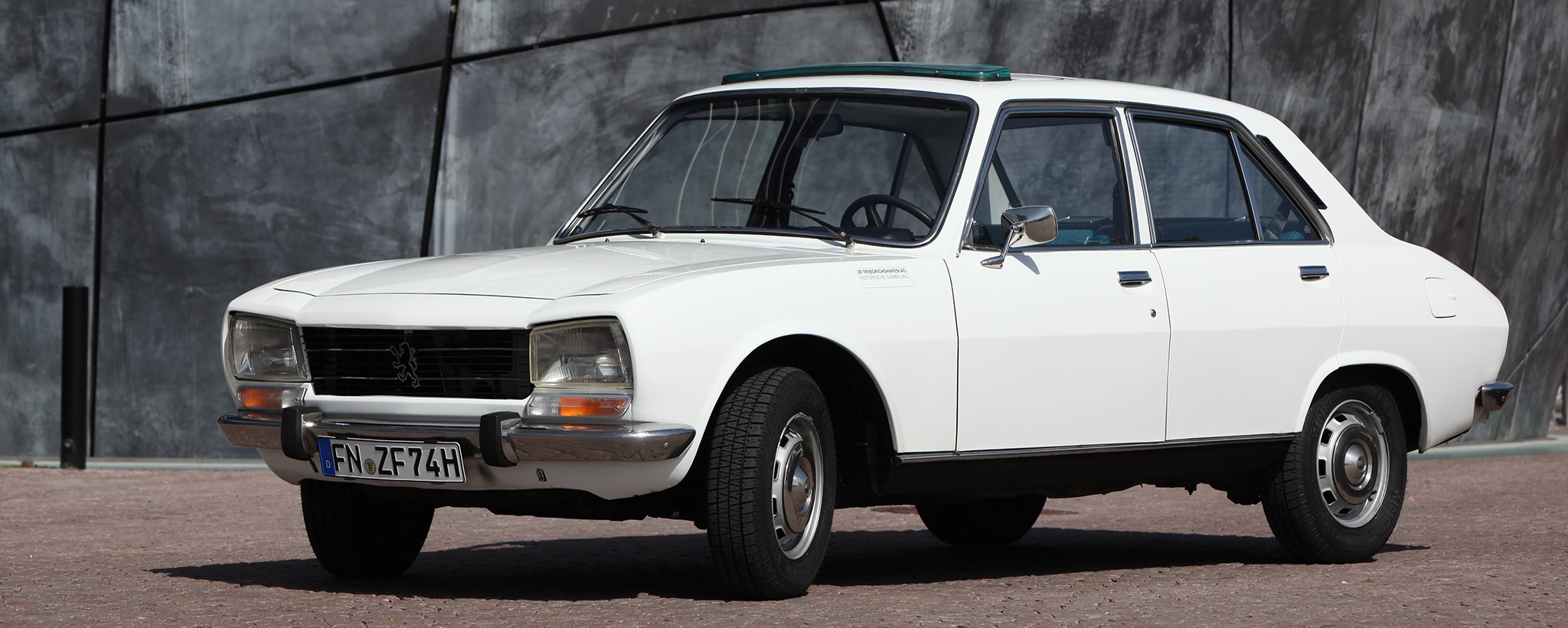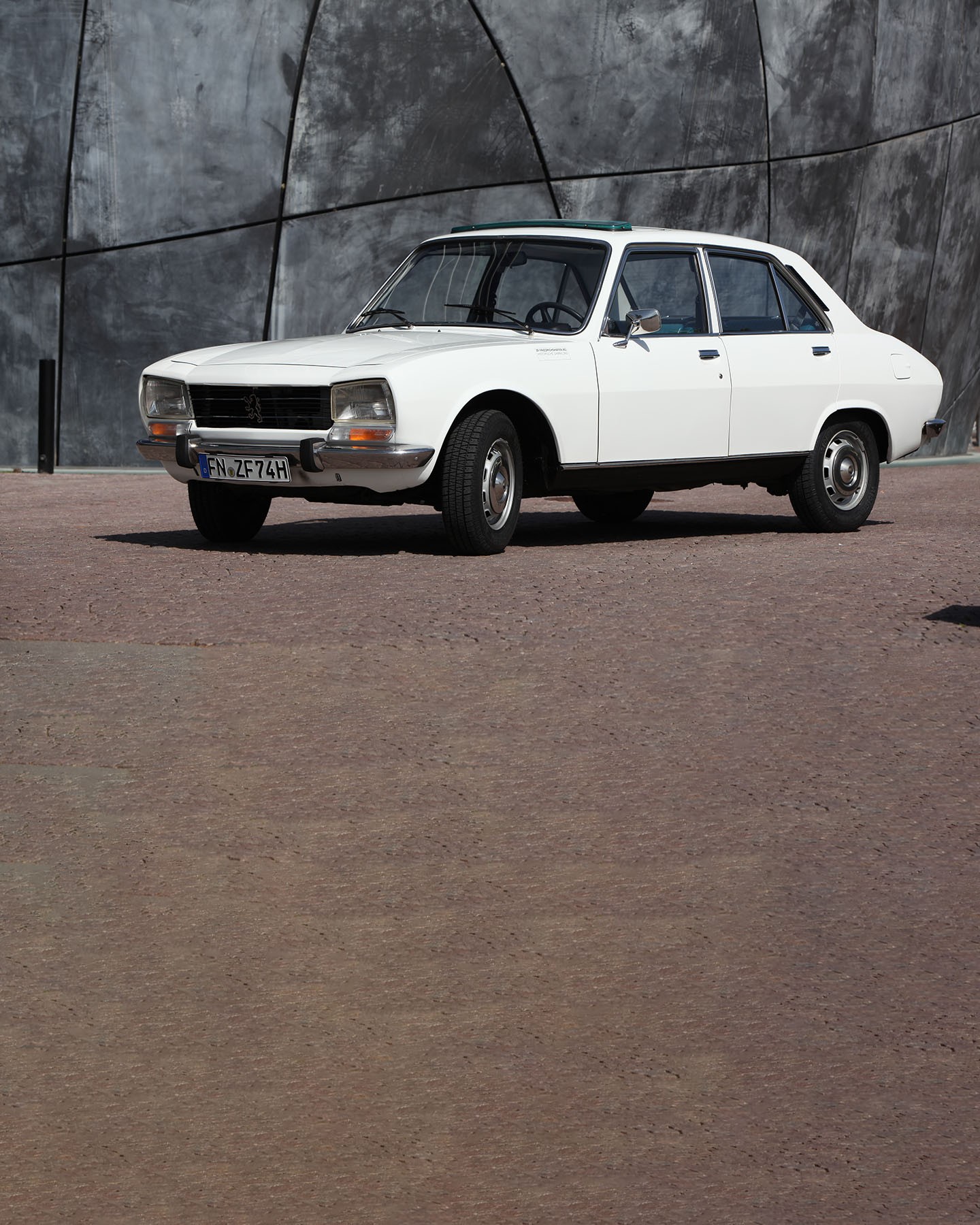

Peugeot 504 - The Game Changer
In the eyes of car enthusiasts, the Peugeot 504 is a technical masterpiece. For Peugeot and ZF, it’s the model that saved the day and laid the foundation for a long and successful partnership in challenging times. But how did this come about?
The end of the sixties was characterized by social unrest and increasing competition, leading to difficult times like today for ZF and car manufacturers alike. Governments exercised regulatory influence: They began to introduce stricter regulations for vehicle safety and environmental protection, forcing car manufacturers to adapt their production processes and invest in the development of safer and more environmentally friendly vehicles. This pushed the industry to adapt and led to a period of change. Prices learned to walk...
The right Car at the right Time
It was difficult to sell cars to the upper middle class until Peugeot skillfully reached into the modular system and created the 504 as a model extension to the popular Peugeot 404. The success of this approach can be attributed to a stroke of both genius and luck, which worked in ZF’s favor, as sales of passenger car transmissions were anything but rosy at the beginning of the 1960s. Thanks to Peugeot, a new success story began for ZF with the company’s first automatic transmission — the 3 HP 12 – which was developed in 1965.

Photo from the production of the 3 HP 12 in 1966
The 3 HP 12 is a three-stage automatic transmission for passenger cars with a displacement of between 1.5 and 2.2 liters. The hydraulic torque converter is followed by a mechanical planetary gearbox with three forward gears. At that time, automatic transmissions were still being built in Friedrichshafen in Plant 2, but due to the high demand, the capacity limit was quickly reached. With this new achievement, ZF was also able to recover from the economic downturn in the passenger car sector.
Italian Design, French Soul
Although the 504 was not revolutionary, it was to become one of the most successful models of the Peugeot brand. In September 1968, the French presented an unconventional, modern, and extremely robust car. The bodywork was designed in collaboration with Pininfarina. "Italian style, French soul" was the motto used to advertise the 504. An important innovation was the rear wheels individually suspended on triangular trailing arms, coil springs and Sachs telescopic shock absorbers. Together with the front wheels guided on suspension struts and wishbones, they enhanced safety and allowed for the comfortable French driving experience that was expected.

Peugeot 504: Italian design, French soul
The journalists were particularly enthusiastic about the fuel-injected model: with 100 hp at 5500 rpm, 100 km/h (about 62 mph) could be reached in 13.2 seconds. The Peugeot 504 was modern in design and proved to be a reliable and comfortable companion.
Car of the Year 1969
Shortly after its launch, the Type 504 was equipped with the new 3 HP 12, and even before it was widely available, the vehicle earned the distinction of "Car of the Year" in 1969. This advance praise triggered unprecedented buzz among customers, indicating a promising future.
This success also allowed ZF to turn the corner, and production was gradually relocated to Saarbrücken from 1973. After Borg Warner withdrew from the ZF Borg Warner GmbH cooperation founded jointly in 1970 just two years later, ZF took over the shares and continued to run ZF Getriebe GmbH on its own.
Due to the success of the Peugeot 504, however, ZF was able to secure a follow-up order during this economically challenging time: In 1974, ZF Saarbrücken concluded a seven-year contract with Peugeot for 400.000 automatic transmissions of the new transmission type 3 HP 22. Though identical in construction to the 3 HP 12, this transmission’s capacity was 75% higher than the previous model. "Automatically better driving - automatically less stress" was Peugeot's motto during this time, and it was very well received by customers.
Peugeot gave the 504 a careful facelift over the years, and by March 1978, two million Peugeot 504 cars had been built. The 504 saloon was built in France until the end of 1983, and production continued at various locations around the world. In total, 3.712 million 504 models were built, the last of which finally rolled off the production line in Nigeria in December 2005.
This example from ZF's Historical Collection was purchased to honor a valued customer and to commemorate a significant milestone: ZF's first automatic transmission.

The unconventional body of the Peugeot 504 was designed by Pininfarina












